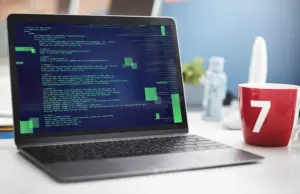The Print is a built-in function in Python that is used to display text on the console or output screen. The default Print function outputs the text with endline. In this tutorial, we will have a look at different versions of print statements.
Working of Normal print() function
The print function takes a string or variable as input. As shown in the example below. The normal print function adds an end line at the end of the line.
| print(“Hello World”) print(“Simple print adds an end line.”) |
How to print without a newline in Python?
We just need to add an end parameter at the end of the print statement as shown in the image below.
| print(“Hello World” , end=’ ‘) print(“Simple print adds an end line.”) |
We can also end our line with a dot(.)
| print(“Hello World ” , end=’.’) print(“Simple print adds an end line.”) |
Using Python sys module
There is another way to print on the console using the sys library. When using the sys library function write it does not add end line.
| import sys sys.stdout.write(“Hello World “) sys.stdout.write(“Welcome to h2kinfosys website”) |
Using print() to print a list without a newline
If we simple use for loop to print the elements of the list the following will be the output.
| colors = [“Red”, “Green”, “Blue”, “Yellow”, “Brown”] for i in colors: print(i) |
For printing all the list items in a single line we simply need to add the end parameter.
| colors = [“Red”, “Green”, “Blue”, “Yellow”, “Brown”] for i in colors: print(i, end=’ ‘) |































One Response